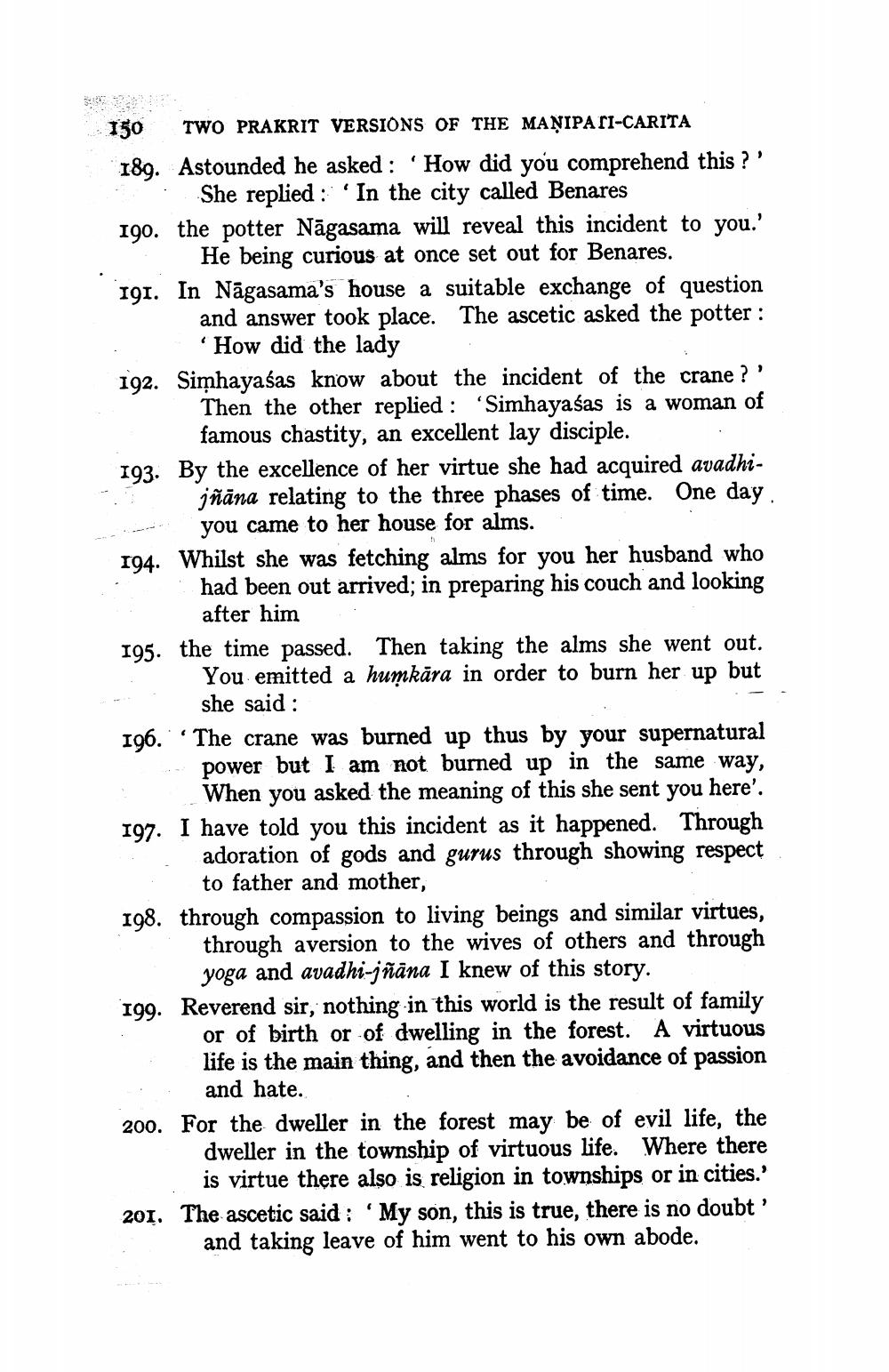________________
150 TWO PRAKRIT VERSIONS OF THE MAŅIPA CI-CARITA 189. Astounded he asked : 'How did you comprehend this ?'
She replied: 'In the city called Benares 190. the potter Nāgasama will reveal this incident to you.'
He being curious at once set out for Benares. 191. In Nāgasama's house a suitable exchange of question
and answer took place. The ascetic asked the potter :
How did the lady 192. Simhayaśas know about the incident of the crane ?'
Then the other replied: 'Simhayaśas is a woman of
famous chastity, an excellent lay disciple. 193. By the excellence of her virtue she had acquired avadhi
jñāna relating to the three phases of time. One day. . you came to her house for alms. 194. Whilst she was fetching alms for you her husband who
had been out arrived; in preparing his couch and looking
after him 195. the time passed. Then taking the alms she went out.
You emitted a humkāra in order to burn her up but
she said : 196. "The crane was burned up thus by your supernatural
power but I am not burned up in the same way,
When you asked the meaning of this she sent you here'. 197. I have told you this incident as it happened. Through
adoration of gods and gurus through showing respect
to father and mother, 198. through compassion to living beings and similar virtues,
through aversion to the wives of others and through
yoga and avadhi-jñāna I knew of this story. 199. Reverend sir, nothing in this world is the result of family
or of birth or of dwelling in the forest. A virtuous life is the main thing, and then the avoidance of passion
and hate. 200. For the dweller in the forest may be of evil life, the
dweller in the township of virtuous life. Where there
is virtue there also is religion in townships or in cities.' 201. The ascetic said: 'My son, this is true, there is no doubt'
and taking leave of him went to his own abode.




